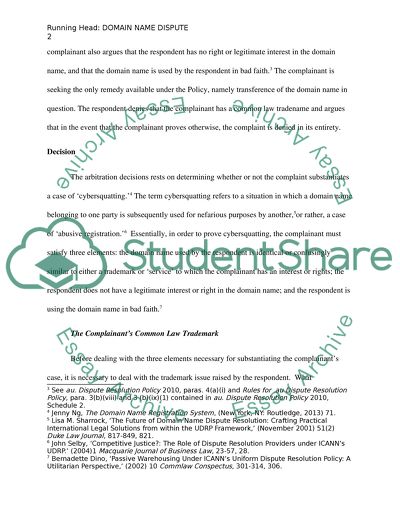Cite this document
(“Domain Name Dispute Assignment Example | Topics and Well Written Essays - 2000 words”, n.d.)
Domain Name Dispute Assignment Example | Topics and Well Written Essays - 2000 words. Retrieved from https://studentshare.org/law/1655453-domain-name-dispute-assessment-task
Domain Name Dispute Assignment Example | Topics and Well Written Essays - 2000 words. Retrieved from https://studentshare.org/law/1655453-domain-name-dispute-assessment-task
(Domain Name Dispute Assignment Example | Topics and Well Written Essays - 2000 Words)
Domain Name Dispute Assignment Example | Topics and Well Written Essays - 2000 Words. https://studentshare.org/law/1655453-domain-name-dispute-assessment-task.
Domain Name Dispute Assignment Example | Topics and Well Written Essays - 2000 Words. https://studentshare.org/law/1655453-domain-name-dispute-assessment-task.
“Domain Name Dispute Assignment Example | Topics and Well Written Essays - 2000 Words”, n.d. https://studentshare.org/law/1655453-domain-name-dispute-assessment-task.


